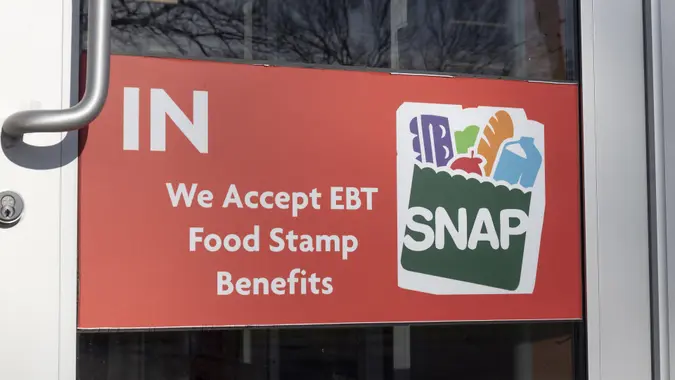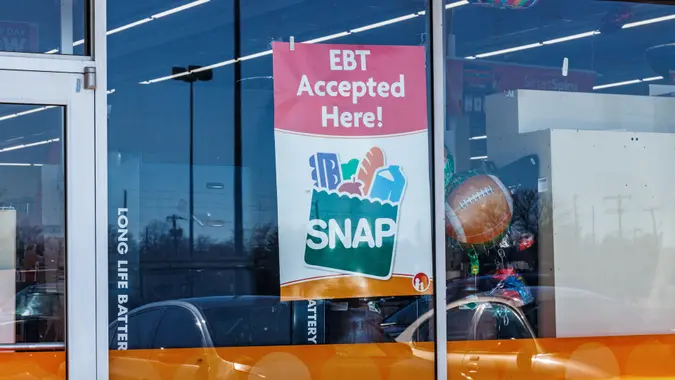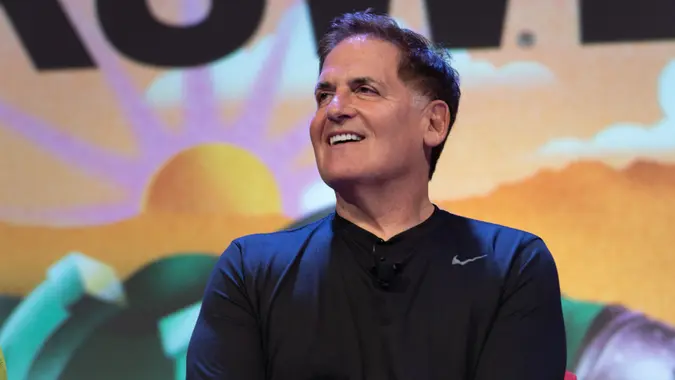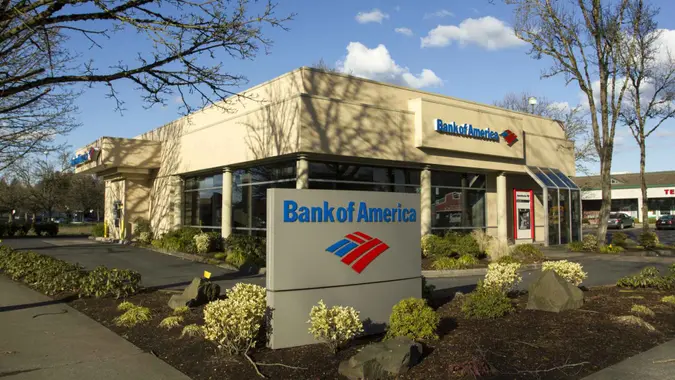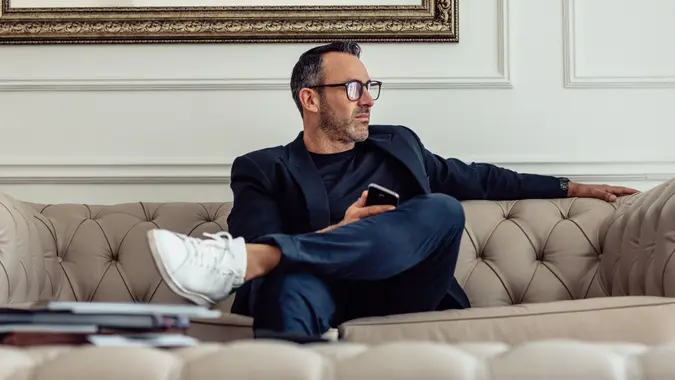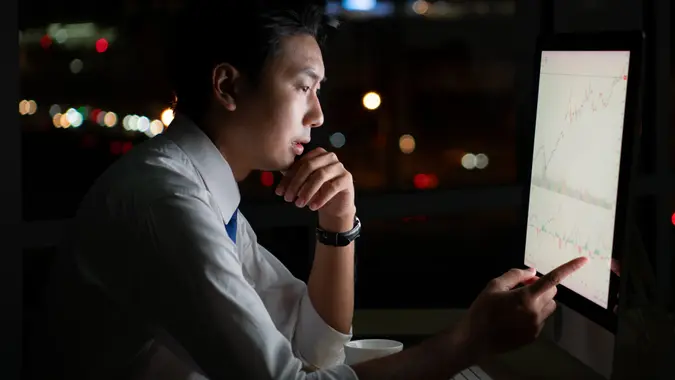4 Rare Coins Expected To Lose Their Value Before the End of 2024

Commitment to Our Readers
GOBankingRates' editorial team is committed to bringing you unbiased reviews and information. We use data-driven methodologies to evaluate financial products and services - our reviews and ratings are not influenced by advertisers. You can read more about our editorial guidelines and our products and services review methodology.

20 Years
Helping You Live Richer

Reviewed
by Experts

Trusted by
Millions of Readers
While many of us spent the COVID-19 pandemic making sourdough starter and tie dye shirts, a large coterie of people started investing in rare coins. As thousands of new collectors entered the market, the price of many rare coins soared.
“During Covid, pricing became somewhat inflated,” said Ted Ancher, Director of Numismatics at coin dealereship APMEX. “I’d say it sort of reached the highest points they ever reached.”
Currently, the rare coin market is experiencing what Ancher sees as a “resettling.” He pointed to the example of a Carson City uncirculated silver dollar in GSA packaging — a coin that sold for approximately $175 wholesale before the pandemic, but spiked to upwards of $300 during the pandemic. Today, the same coin is worth about $285.
Ancher said that if you hold onto rare coins long enough, they will likely appreciate in time. Unlike stocks, when they do appreciate, they will do so slowly.
“They’re sort of like the bones of collecting,” he said, adding that rare coins should be viewed as a long-term investing strategy.
While he said it’s important not to worry about short-term fluctuations in rare coin prices, there are some events that can hasten the depreciation of a rare coin, as well as certain practices that can result in a loss of value.
Coin Hoards
Unlike bullion, the value of rare coins is mostly determined by the coin’s mintage, or how many of a certain type of coin are in circulation. The mintage doesn’t usually increase, unless a batch of rare coins are discovered in what’s known as a coin hoard.
Last year, a farmer in Kentucky discovered hundreds of Civil War-era coins in a cornfield, including 1856 Seated Liberty Half Dollars and 1863 Double Eagles. Ancher said the discovery of hoards like this can often bring down the value of rare coins.
“If many of them were the same date and mint mark, whoever is holding coins with the same date and mint mark will be pretty upset, because all of a sudden there will be a floor of that coin on the market,” Ancher said.
Shipwrecks
Occasionally, a literal treasure trove of rare coins to be discovered in a shipwreck or underwater by divers. Like with coin hoards, this can result in a previously rare coin flooding the market, and potentially driving down the value.
A recent example of this was the discovery of a metal box containing more than 30,000 ancient bronze coins by divers off the coast of Sardinia last year. The coins likely came from a 4th century shipwreck. Though rare, the sheer volume discovered could impact the value of coins from the same era.
“Following shipwrecks, what was once a very uncommon coin can suddenly become a very common one,” said Ancher.
Coins Undervalued at Auction
In addition to mintage, auctions can sometimes have an adverse effect on the price of a rare coin. If a collector gets lucky and finds themself at an auction that somehow slipped under the radar for other dealers, they could potentially score a rare coin for a bargain. On occasion, though, a coin selling below their market value could result in a resetting of what the collecting community thinks they’re worth.
“Sometimes a coin sells for something very under market. Auctions are just a snapshot in time, but they can influence the market,” said Ancher. However, he added that this doesn’t mean you should start selling all your coins.
“Most likely, that bidder just got really lucky.”
Cleaned Coins
Ancher said that nothing sucks the value out of a coin collection cleaning your rare coins.
“Something that could be worth $1,000 could be cut in half, or worse, if you clean your coin,” he warned.
Furthermore, it’s important to look for signs that a coin’s been cleaned when buying rare coins. For new collectors, Ancher advised buying coins that are NCG or PCGS certified rather than raw as a way to safeguard against counterfeits or unscrupulous dealers who might try to pawn a worthless cleaned coin off on an unsuspecting collector.
When it comes to investing in coins, Ancher’s biggest piece of advice is not to worry too much about depreciation, particularly over the short-term.
“Holding a coin for six months or a year, or even three years is not enough time for it to appreciate,” he said. “You won’t start to see that happen until you hold on to it for five, ten or typically 20 years.”
 Written by
Written by  Edited by
Edited by 






